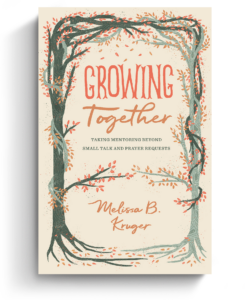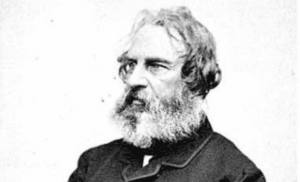This series analyzes perplexing passages of the Bible. Previously:
Saul’s nighttime séance with the witch of Endor in 1 Samuel 28 is regarded as the coup de grâce on his tragic kingship of Israel. In this text, the Israelite king has reached the bottom of the moral and theological abyss in resorting to occult practices in Israel that he himself has forbidden with the death penalty, in a desperate bid to find out what will happen in an imminent battle with the Philistines on Mount Gilboa.
This text narrates a critical turning point in Israel’s history. The end of the first dynasty is at hand, and the tall ruler will fall as Saul, whose name means “the asked for one,”[1] asks about the future from the place of the dead—Sheol. This word means “the asking place,” perhaps because death is always asking for more.[2] The irony is that the asking place will soon have its request (“the asked for one”) fulfilled. Saul and Sheol are inseparably linked.
This text raises all kinds of theological questions. Did the witch have the ability to bring the departed spirits of the dead back to predict the future for the living, or was this simply a demonic delusion? Does not only God have the power to predict the future? Or do departed spirits or evil spirits? What about other sources of revelation besides the Word of God? Does this text not prove that such exist?
In dealing with this text, let’s briefly summarize it and then try to come to an overall understanding of what is being said before drawing theological conclusions.
Summarizing the Story
1. As already mentioned, the text is pivotal in the book of Samuel as it narrates the events the day before Saul and his sons meet a tragic fate on Mount Gilboa in a battle with the Philistines. As has been the case ever since the Spirit of Yahweh departed from Saul when he disobeyed the Lord, he has tried to find supernatural insight and guidance for his kingship, but to no avail.[3] Here, before an extremely important battle, Saul as a military leader is desperate for some supernatural guidance, as was the case generally before a battle in the ancient world.[4] But his desperation finds no solution as God is silent through the media of prophets, Urim and Thummim, and dreams. Not content to take divine silence for an answer, Saul crosses forbidden theological boundaries in virtual sacrilege and seeks guidance from a medium, a woman called a “mistress of necromancy.”[5] This person is traditionally called “the witch of Endor,” presumably because she was well known in that area. The name Endor may itself suggest a place that had a reputation for necromancy.[6] That Saul has clearly crossed a theological Rubicon is crystal clear because he had earlier sought to eliminate all such diviners from Israel with the death penalty.[7] He is openly defying the word of the Lord, and by consulting the medium pronounces his own death sentence.[8]
2. Saul takes two servants, disguises himself, and deceives the medium about his identity and asks her to bring up the spirit of Samuel the prophet back from the world of the dead to tell him about the outcome of the impending battle. The woman hesitates by reminding him of his own prohibition before she engages in her occult practice. When Samuel’s spirit shows up, the medium shrieks in shock but immediately recognizes Saul, presumably because Samuel’s spirit has enlightened her. At the same time she has to wait for Saul to identify Samuel through her own description. What kind of diviner is this? She alone is able to see the spirit, but Saul must tell her who it is. When Samuel finally speaks he tells the king what he already knows, that God has judged him for his disobedience and has given the kingdom to another. The dead Samuel is the same as the live Samuel! Finally, Samuel adds that Saul and his sons –-the dynasty—will be joining Samuel in Sheol the next day when Israel will lose the battle against the Philistines. At this news, the tall Saul collapses. After being revived, he and his men leave the scene. The next day Israel is defeated at Gilboa, and Saul and his sons are slain.
3. It is clear that the spirit of Samuel appears to the witch and speaks. There is no other way to understand the text in verses 15 and 16, which states that Samuel speaks. But there are other questions to ask. Why was the medium shocked when she saw the spirit of Samuel? Why did she not recognize him but have to wait for Saul’s confirmation of his identity? It seems as if this experience was different from her usual practice of divining departed spirits. Why? Perhaps the narrator is mocking her. In my judgment the reason has to do with the wider context of Samuel. This particular story is an example of God bringing up the dead from Sheol (Samuel) and bringing down the living to Sheol (Saul), exalting the humble and abasing the proud. In the Song of Hannah with which the first book of Samuel begins, Hannah sings about Yahweh’s power: “The LORD brings death and makes alive; he brings down to the grave and raises up” (1 Sam. 2:6). The second book of Samuel essentially begins with David’s lament for the fallen dynasty of Saul, and its refrain reminds everyone of Hannah’s song: “How are the mighty fallen!”
Assessing the Meaning
There is a dark supernatural power to which mediums and diviners sought access in the ancient world. For the Israelites, however, this power was off limits. Yahweh was the ultimate power, and his transcendence meant that Israel must trust in him alone. This dark power was no match for Yahweh and in the end would be terribly harmful. For example, all the demonic powers behind the Canaanite Baal cult were no match for the prophet of God on Mount Carmel during the time of Elijah.[10] But in this example in 1 Samuel 28, it is only fitting that because Saul continued to defy God to the end, his end was brought about through his own rebellion, which was the result of disobedience. The depths to which Saul had sunk in seeking counsel from a witch prove Samuel’s prophetic words when he was alive and first condemned Saul because of disobedience: “Rebellion is as the sin of witchcraft, and arrogance like the evil of idolatry.”[11]
At the time Saul probably thought this was an “over the top” prophetic exaggeration. How wrong he was! God brought the prophet back from dead to remind him of this truth. The fact that Saul went out to battle the next day proves the truth of father Abraham who speaks to all of us from the afterlife: “If they do not listen to Moses and the Prophets, then they will not be convinced even if someone rises up from the dead.”[12] The story of Endor reminds us all of the importance and clarity of the divine word. He who speaks to the dead soon joins them.[13]
[1] Probably originally “asked of” God.
[2] Or it could mean, the pit or grave where necromancy occurs, i.e. where mediums ask the dead for information.
[3] Cf. 1 Samuel 14:37, 16:14, 18:12
[4] Cf. 1 Kings 22, Ezekiel 21:21
[5] The expression suggests originally “owner of a pit” from which a spirit would be conjured up. She had a certain place, connected to a ritual pit or grave (Sheol) where she employed her trade at night. By semantic extension the pit from which the spirit was conjured becomes associated with the spirit itself, and even the medium. Cf. Harry A. Hoffner Jr., “Second Millennium Antecedents to the Hebrew ’Ôb,” Journal of Biblical Literature 86 (1967): 401.
[6] “Spring of Generation(s)” suggests a place where past generations could have been consulted. Note also how quickly the servants of Saul responded to Saul’s request for necromancy.
[7] 1 Samuel 28:3
[8] Cf. the Chronicler’s concise summary of the event: 1 Chronicles 10:13-14.
[9] They saw this practice as widespread in the ancient world and probably effective, but for them it was off-limits. There were dark powers to which they were forbidden access for their own good. See Philip S. Johnston, Shades of Sheol: Death and Afterlife in the Old Testament (Downers Grove, IL: IVP Academic, 2002), 158.
[10] 1 Kings 18
[11] 1 Samuel 15:23
[12] Luke 16:31
[13] Peter D. Miscall, 1 Samuel: A Literary Reading (Bloomington, IN: Indiana University Press, 1986), 172.
Involved in Women’s Ministry? Add This to Your Discipleship Tool Kit.
 We need one another. Yet we don’t always know how to develop deep relationships to help us grow in the Christian life. Younger believers benefit from the guidance and wisdom of more mature saints as their faith deepens. But too often, potential mentors lack clarity and training on how to engage in discipling those they can influence.
We need one another. Yet we don’t always know how to develop deep relationships to help us grow in the Christian life. Younger believers benefit from the guidance and wisdom of more mature saints as their faith deepens. But too often, potential mentors lack clarity and training on how to engage in discipling those they can influence.
Whether you’re longing to find a spiritual mentor or hoping to serve as a guide for someone else, we have a FREE resource to encourage and equip you. In Growing Together: Taking Mentoring Beyond Small Talk and Prayer Requests, Melissa Kruger, TGC’s vice president of discipleship programming, offers encouraging lessons to guide conversations that promote spiritual growth in both the mentee and mentor.





























